World 🢖 Europe 🢖 Germany 🢖 Bavaria
Christian monasteries 🢔 Religious architecture 🢔 Architectural wonders 🢔 Categories of wonders
Wonder
Ottobeuren Abbey
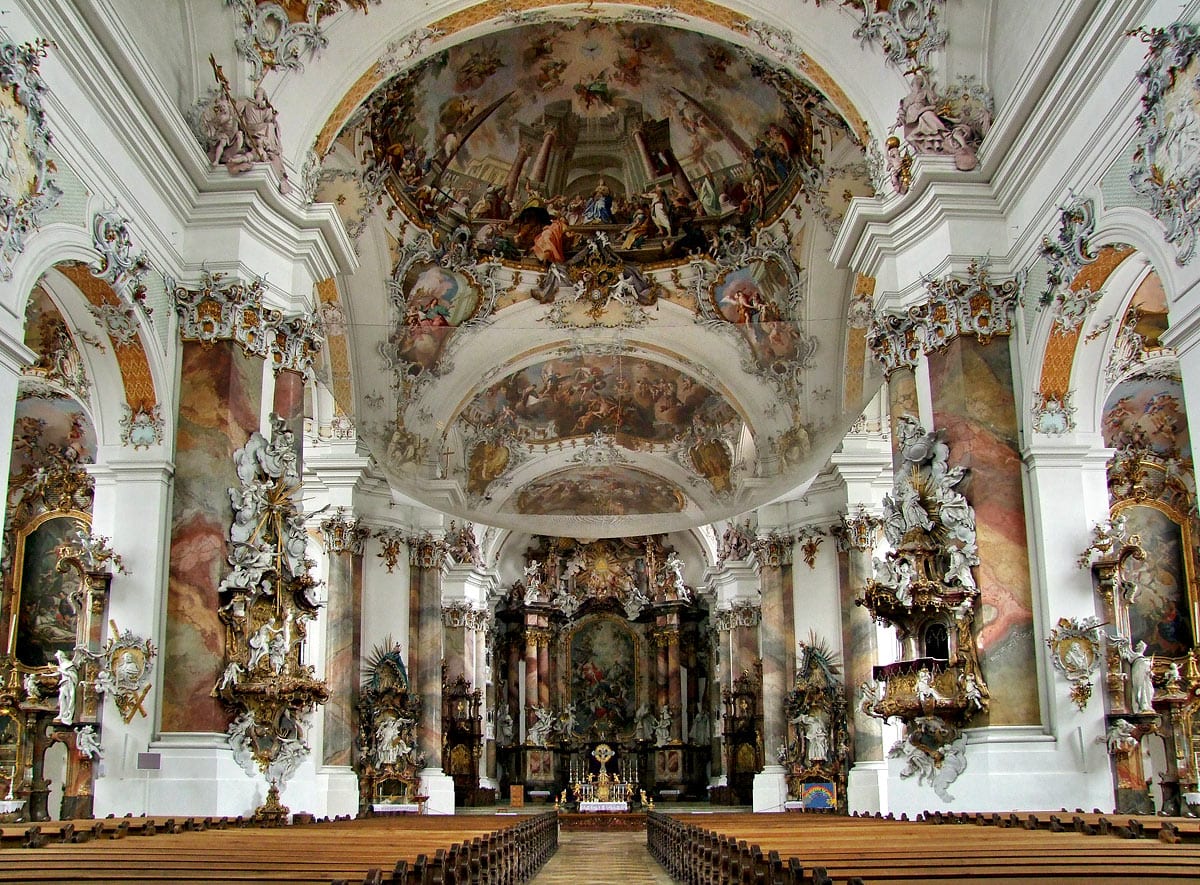
 In short
In short
There are no doubts: Ottobeuren Abbey and, especially, Ottobeuren Basilica have some of the best Baroque and Rococo style interiors worldwide. Though, just a few realise the wealth of symbolic messages in the architecture and embellishments of Basilica – such as the four richly dressed and embellished skeletons.
 46.8%
46.8%
GPS coordinates
Name in German
Architectural style
Architects
Founded
Year of construction (monastery)
Order
Year of construction (church)
Branch of Christianity
Map of the site
If you see this after your page is loaded completely, leafletJS files are missing.
 In detail
In detail
History
Foundation
Ottobeuren is an old settlement, according to legends established by someone named Uot in the 5th century. Hence it got its name – first Uotbeuren, later transformed into Ottobeuren.
Benedictine abbey was founded here in 764 AD – thus it is older than most contemporary states and cities! Abbey was founded by Blessed Toto and dedicated to two saints: Alexander of Rome (died as a martyr sometimes around 130 AD) and Theodor of Sion (first bishop of Valais, died around 400 AD).
Medieval times
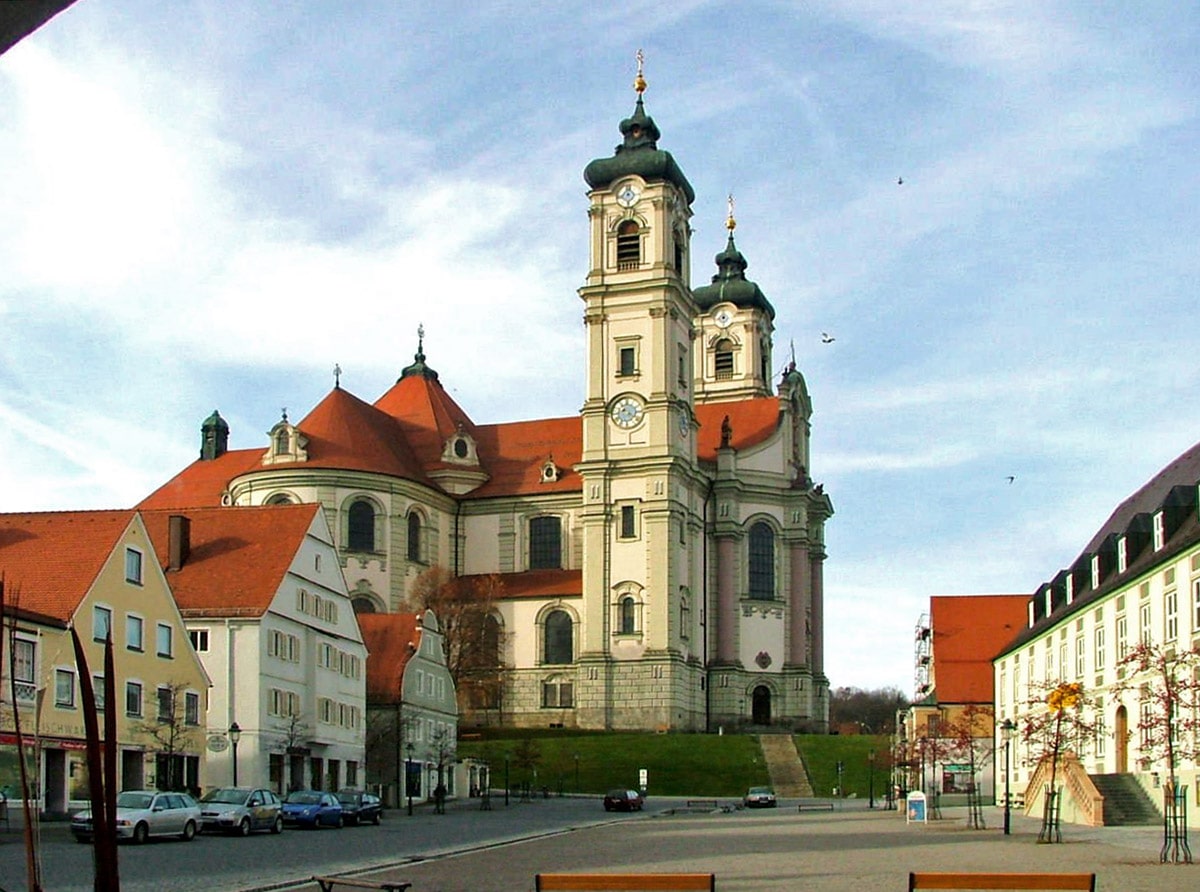
In the coming centuries Ottobeuren Abbey became an important institution.
In the 11th century the discipline in the abbey was in decline – and then abbot Adalhalm in 1082 introduced Hirsau reforms, aiming at strict discipline. He and his successor Rupert I rebuilt and reconstructed the dilapidated buildings.
In 1299 Ottobeuren got the status of the imperial abbey – it was answerable directly to the emperor of the Holy Roman Empire and thus comparable to a small country.
In the early 15th-century abbey was in decline again – there were only some six-eight monks in it. Later though it regained its influence.
"Golden time"
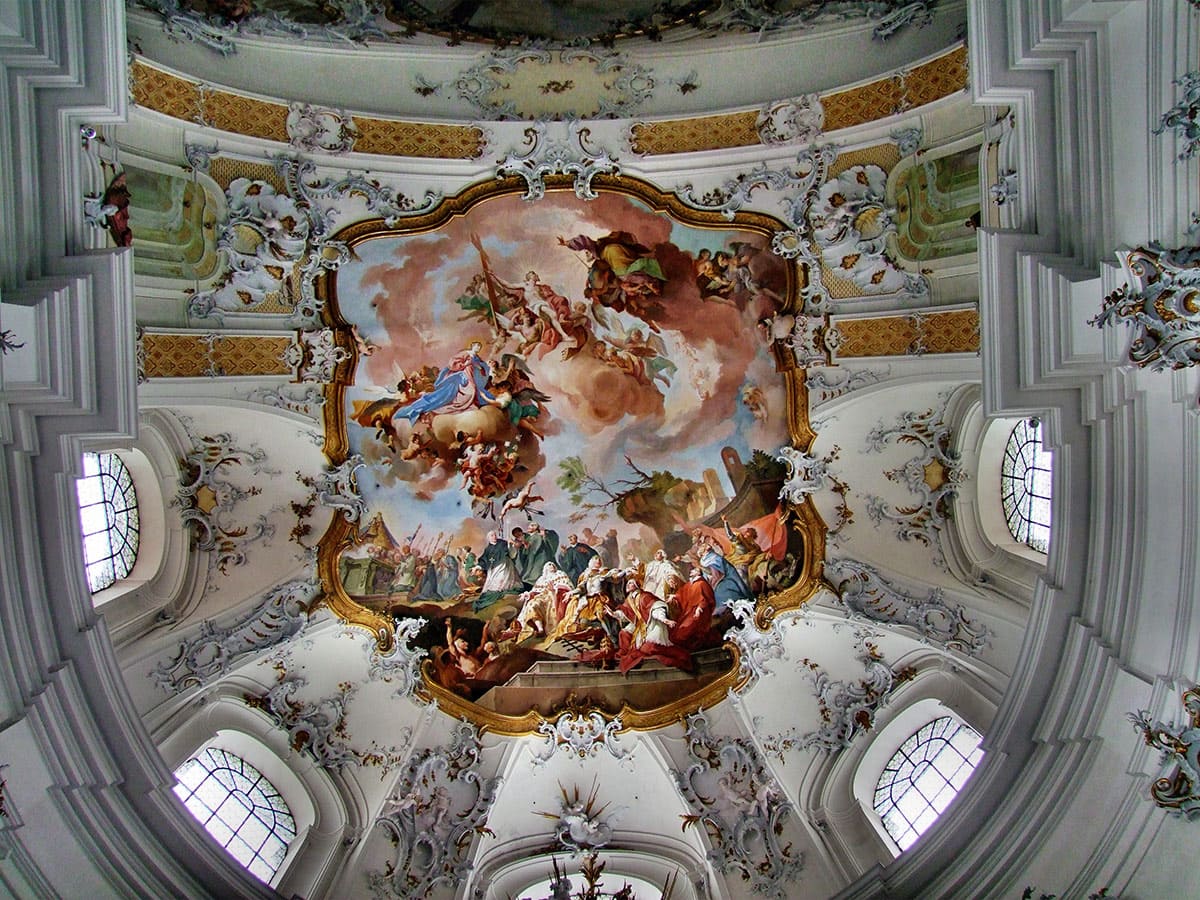
In 1710 new and ambitious abbot – Rupert Ness came. He ordered to remove the old buildings and completely new structures were built. The present monastery – one of the most magnificent buildings in Swabia – was built in the trendy Late Baroque style in 1711 – 1725.
In 1737 was started the construction of the magnificent basilica and was completed in the time of the next abbot Anselm Erb, in 1766.
Importance of Ottobeuren Abbey continued to increase and in 1802 there were some 12,000 people living in properties of the abbey. The area of these properties was approximately 165 km².
Secularisation and modern times
In 1802 the abbey was secularized and became a part of Bavaria. Only 18 of the 84 monks could remain here.
In 1834 Benedictine priory was restored by King Louis I of Bavaria – but Ottobeuren was dependent on St. Stephen’s Abbey in Augsburg. Ottobeuren Abbey became independent only in 1918 and is active up to this day.
In total 65 abbots have governed Ottobeuren Abbey.
Basilica
Previous churches
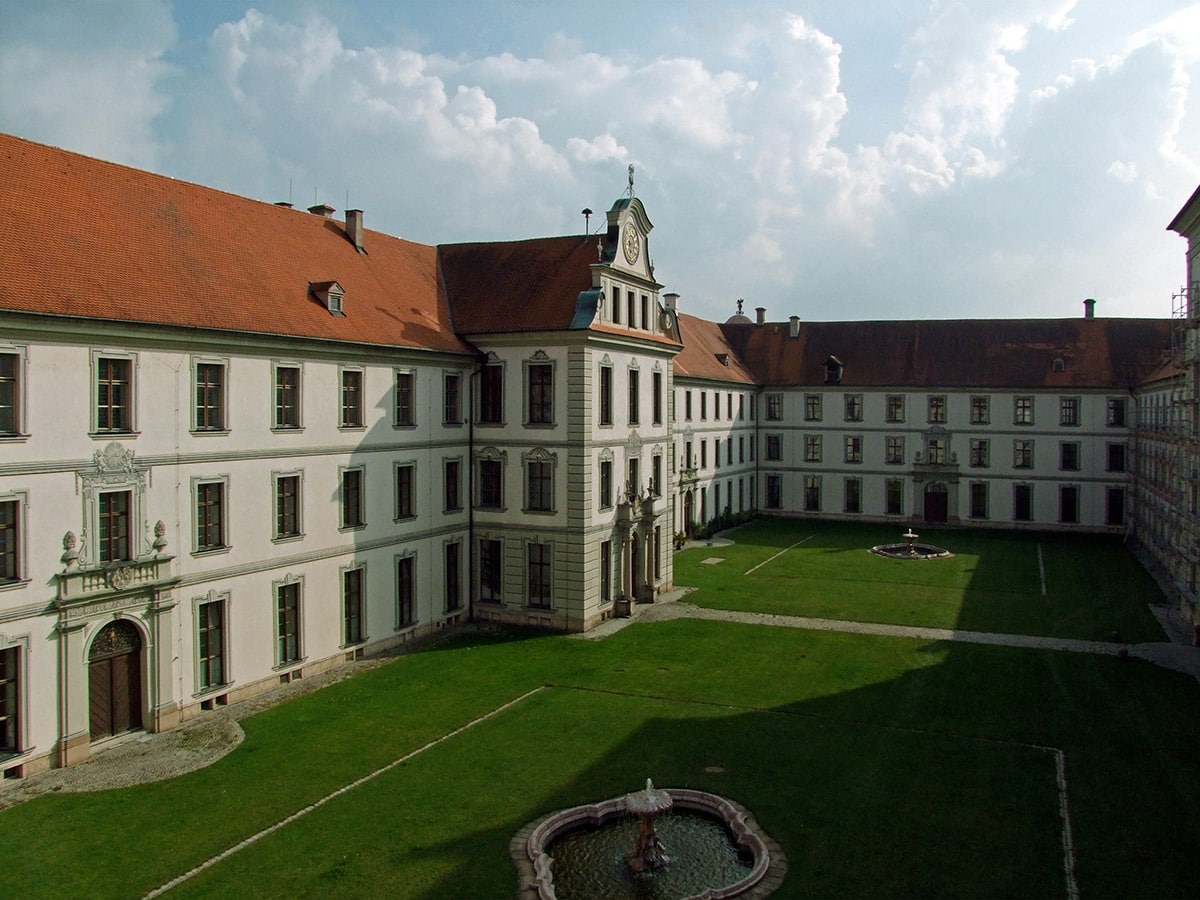
Most likely the first church was built here sometime around 764 AD – when the abbey was founded. It is known that a new church was built here in 1089. It was destroyed and a new one was built in 1204, in 1553 – 1558 was built next church in Renaissance style. This structure was devastated between 1630 and 1635, in the Thirty Year’s War and rebuilt in Baroque style in 1686.
Nevertheless just a few decades later old buildings were removed and the construction of an entirely new church was started.
Construction of present basilica
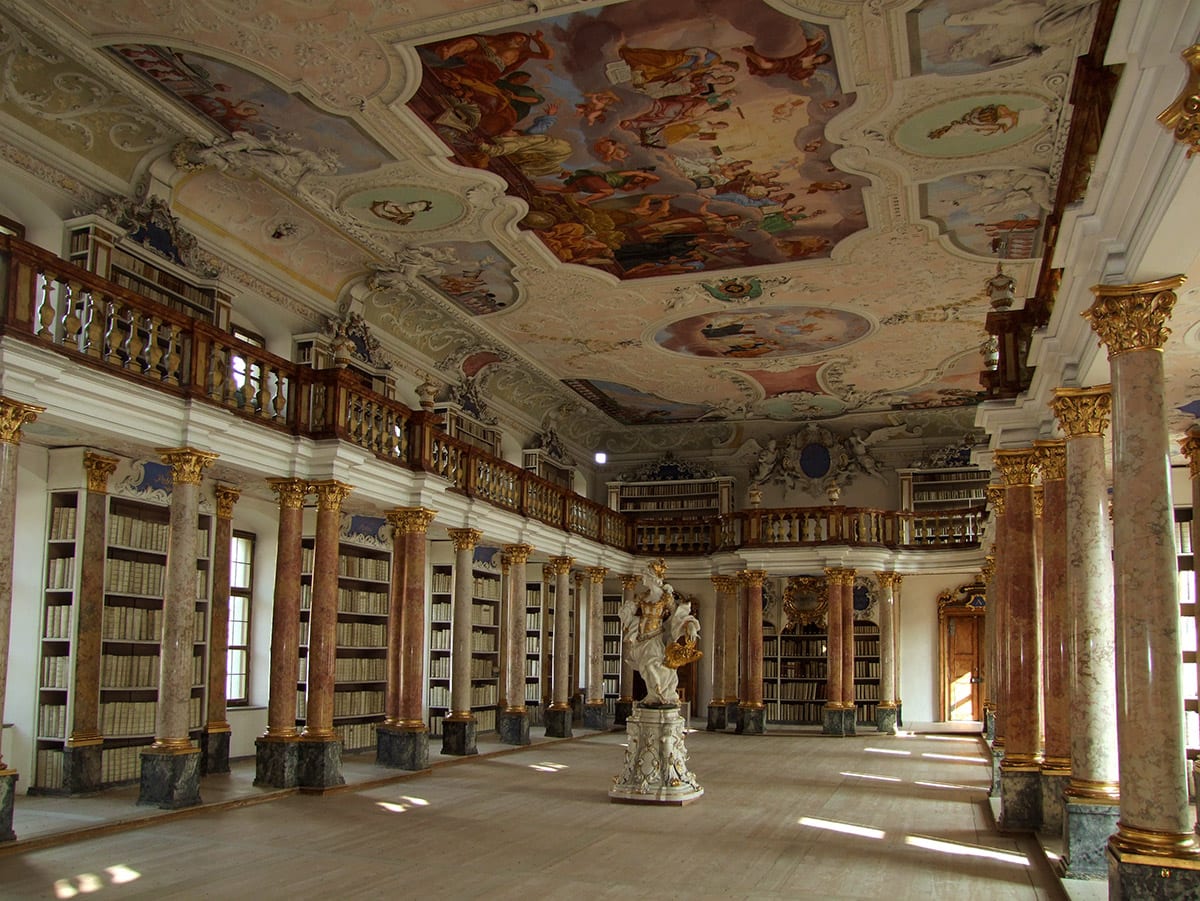
Ottobeuren Basilica is one of the highest achievements in Bavarian Baroque architecture – among a huge wealth of other beautiful buildings.
First architect was Simpert Kramer. He planned to base the design of the new basilica on another great building – the Weingarten Basilica, built in Baroque style in 1724. Works proceeded slowly – in Kramer’s time was built the 12 m deep fundament of the new church around the old church.
11 years later, in 1748 works were continued by Johann Michael Fischer (1692 – 1766), one of the best German Baroque architects.
In five years’ time – in 1753 – the old church was removed and the new one built and interior works started. Towers were complete by 1760, few years later main interior works were completed.
On 28 September 1766 started 8 days long festivity, organized by the abbey. This grand festivity marked the 1000 years anniversary and the new, magnificent church.
The structure was declared as basilica minor in 1926 by pope Pius XI.
Extensive repairs of the church were done in 1960 – 1964, further works were done in 2004 – 2010. Now (until 2014) are ongoing interior renovations.
Description
Nave of Ottobeuren Basilica is 89 m long and 36 m high. Each tower is 82 m tall.
Altar of the basilica is in the south and not in the east, as it is common in churches. This is caused by the wish to create the abbey in a cross-shaped form – basilica is the upper part of this cross.
Interior
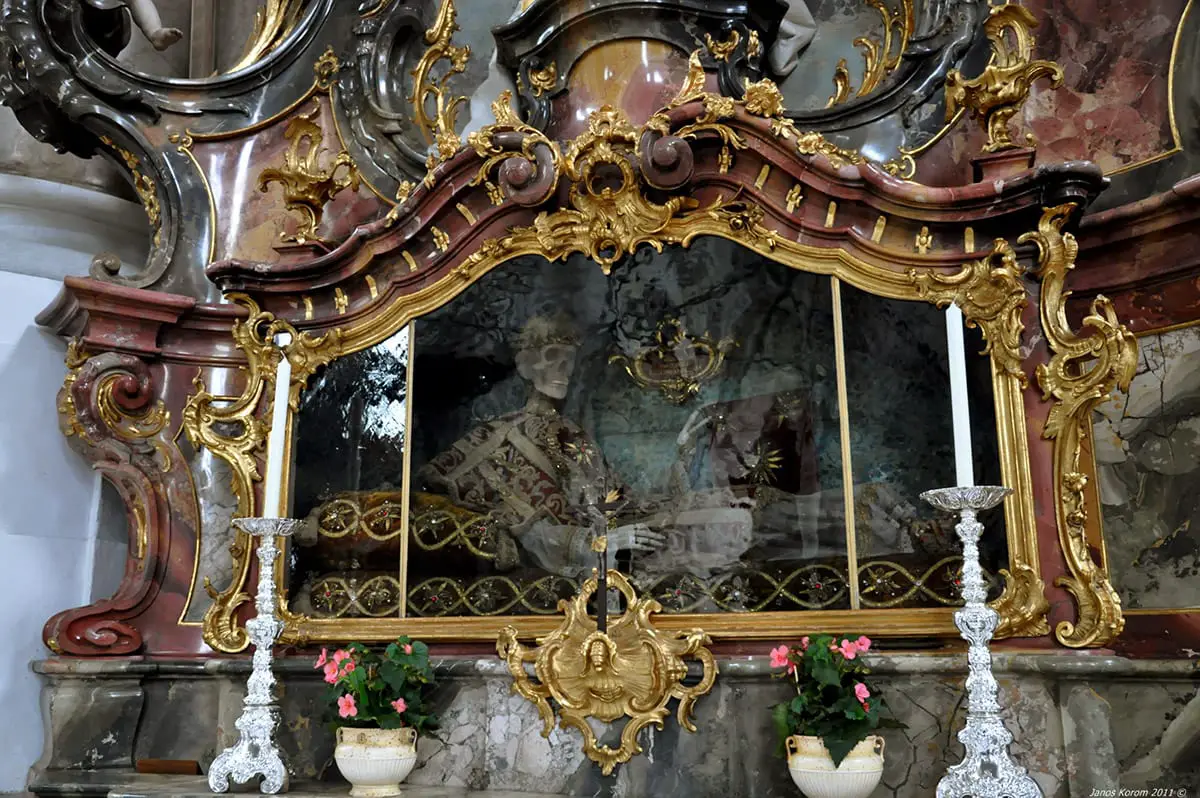
While the building was designed in late Baroque style, the interior was designed in the similar Rococo style and is one of the best-known examples of this style worldwide.
Interior has light colors, it is lavishly adorned with frescoes and other embellishments. The beautiful frescoes were painted by Austrian painters Johann Jakob Zeiller and Franz Anton Zeiller but sculptures created by Johann Joseph Christian.
Basilica has sixteen beautiful altars.
Skeletons
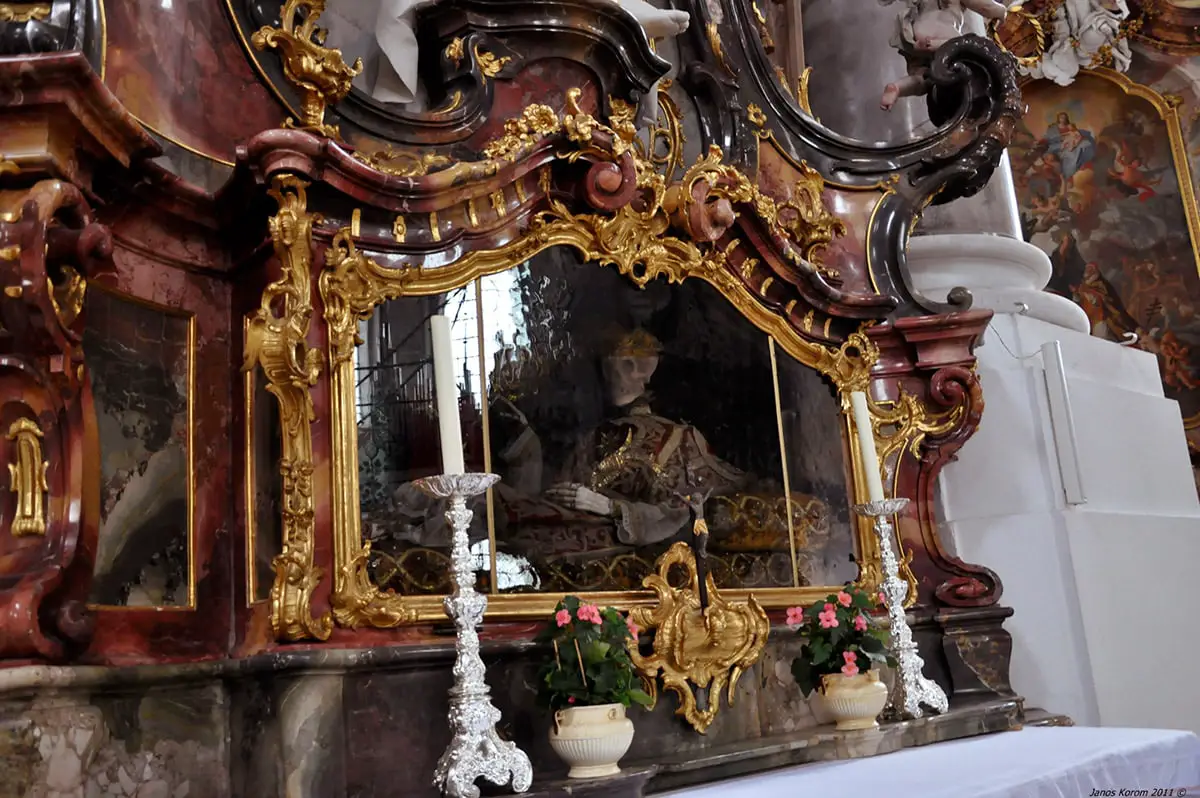
The beauty of Ottobeuren Basilica is not entirely light and easy. Macabre "adornment" of the basilica is complete skeletons of four people in glass coffins. Skeletons have been meticulously prepared, bones fixed together and dressed in ornate velvet and jewels. Most likely they depict the temporary nature of human life and the senselessness of mundane things. Monastery has other bones and skulls too, reportedly belonging to saints.
Organs and musical life
Ottobeuren Basilica has a set of two old organs and one newer.
Old double organ is a masterpiece of organ builder Karl Joseph Riepp (1710 – 1775) and was built after French design. It is the only such instrument remaining in the world. In 1957 there was built another organ by G.F. Steinmeyer & Co.
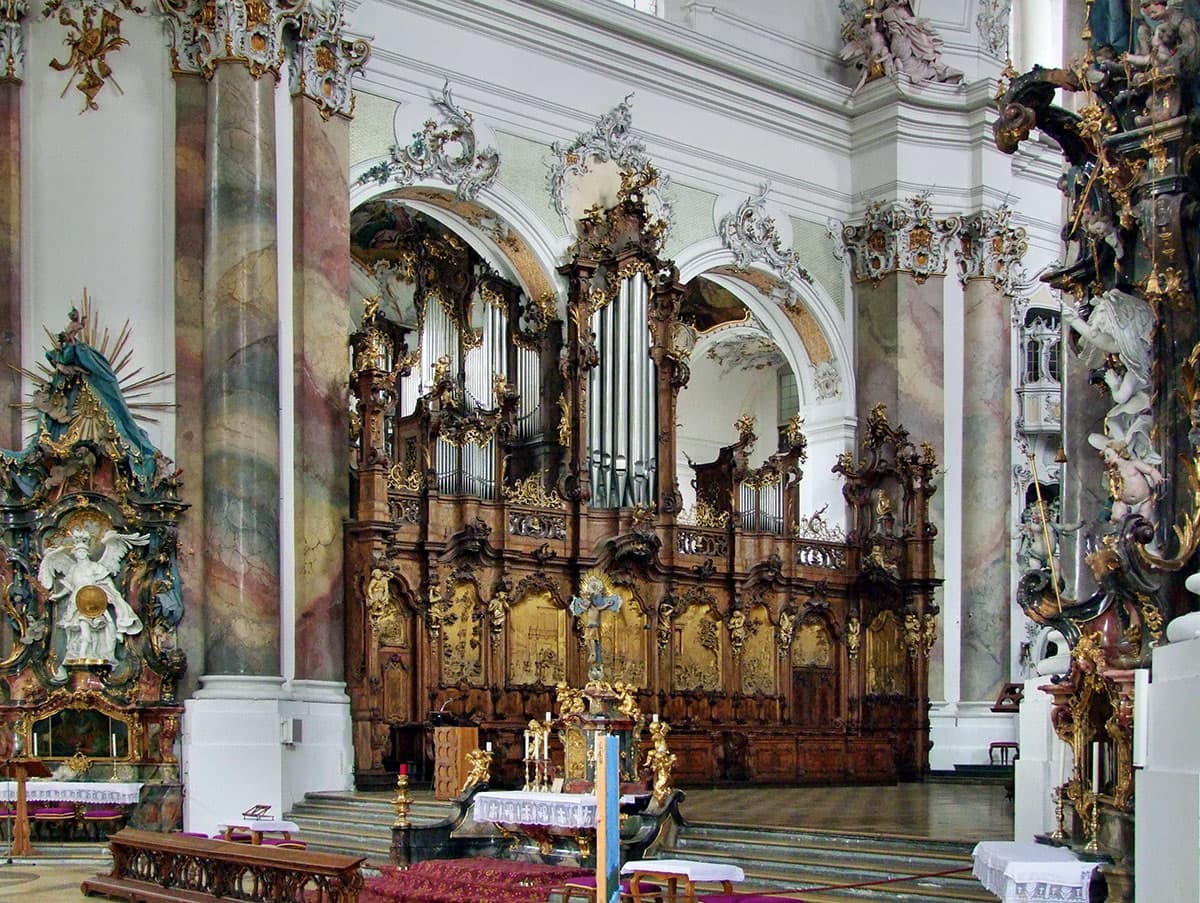
Abbey has rich musical traditions – there are organized concerts every Saturday, 16:00 (Ottobeurer Konzerte), using one of the famous organs in Abbey. Over the last 45 years through these concerts there have been collected more than 3 million EUR for non-governmental organizations.
Description of abbey
The building of Ottobeuren Abbey is older than basilica and is designed in late Baroque style. This large building is 142 by 128 m large.
Abbey has ornate Baroque and Rococo interiors, several rooms are not less adorned than basilica.
Especially beautiful is library (Bibliotheca Ottenburana). This library has a valuable collection of medieval manuscripts, 457 incunables, some 15 thousand folios. The first library in the monastery was established soon after its founding.
The wonderful Baroque interior of library is adorned with frescoes by Elias Zobel and stucco by Johann Baptist Zimmermann.
References
- Benediktinerabtei Ottobeuren – the official website. Accessed April 10, 2013
 Linked articles
Linked articles
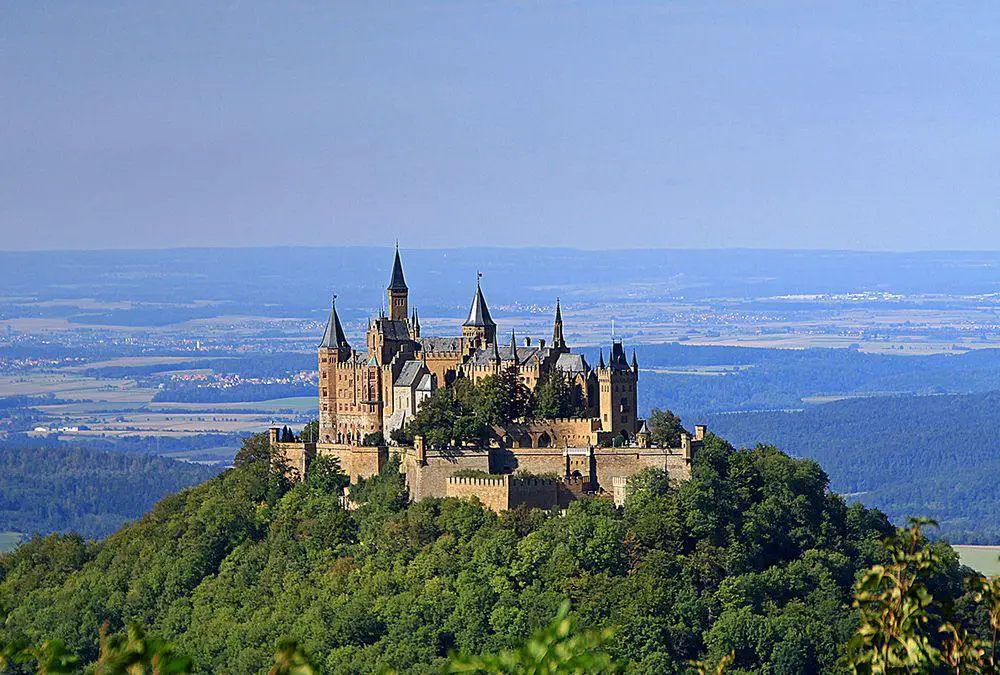
Wonders of Germany
Germany has a picturesque landscape and rather many natural landmarks, but these are overshadowed by the rich and diverse cultural heritage. From time to time immense values have been lost in warfare, but Germans have duly rebuilt their cultural treasures and are constantly creating new values.

Churches
Throughout the millennia Christian churches have been the epitome of architecture and arts achievements in Western culture.
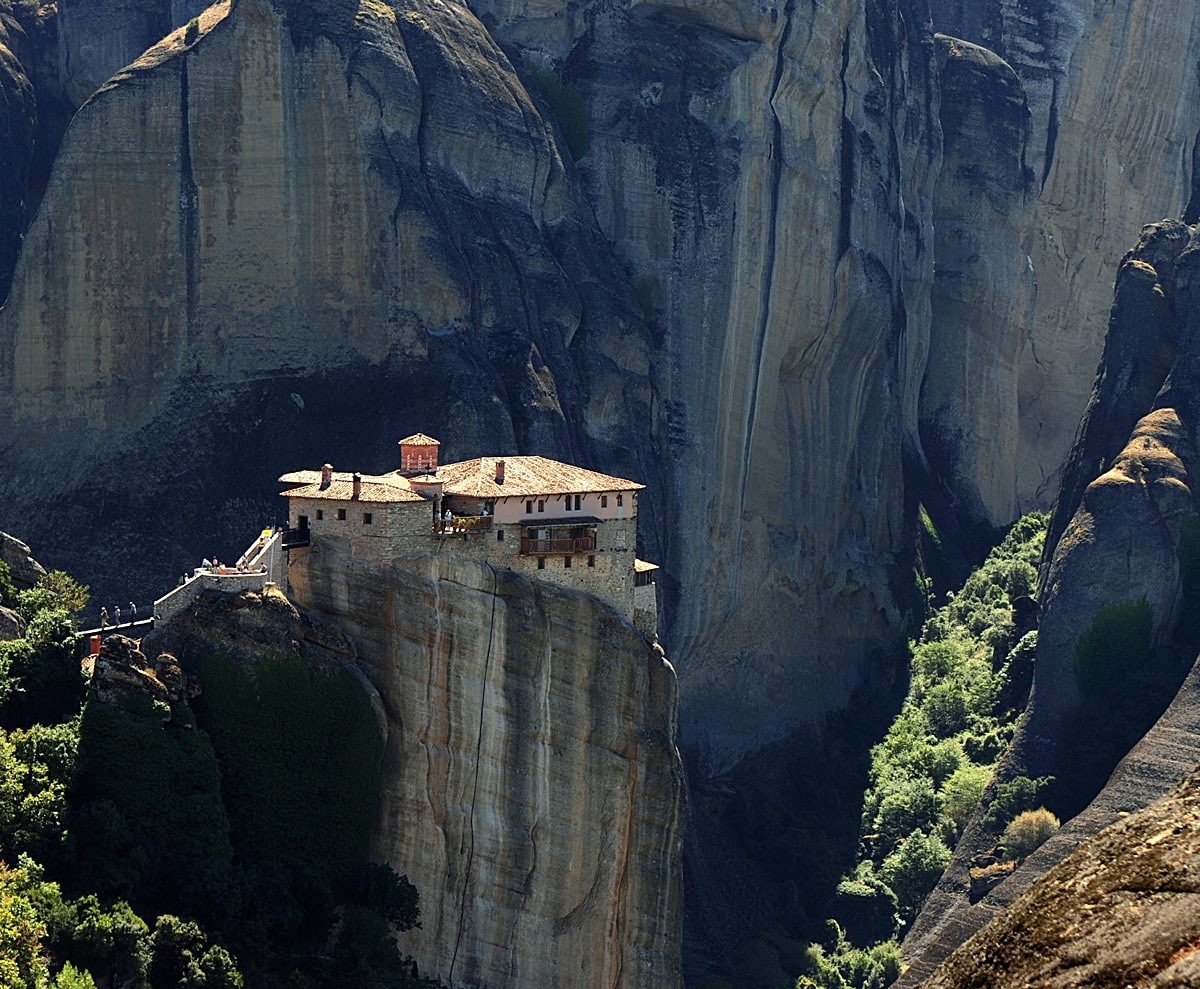
Christian monasteries
Christian monasteries have proven to be a very significant element in history, influencing politics, science, architecture, and art. Often monasteries themselves serve as collectories of written works, art, and crafts.
 Recommended books
Recommended books
Baroque and Rococo Art and Architecture
Baroque and Rococo Art and Architecture is the first in-depth history of one of the great periods of Western art, spanning the years 1585 to 1785. The text treats the major media–painting, sculpture, drawings, prints, and architecture–as well as gardens, furniture, tapestries, costume, jewelry, and ceramics, all in terms of their original function and patronage and with emphasis on the social, political and cultural context.


